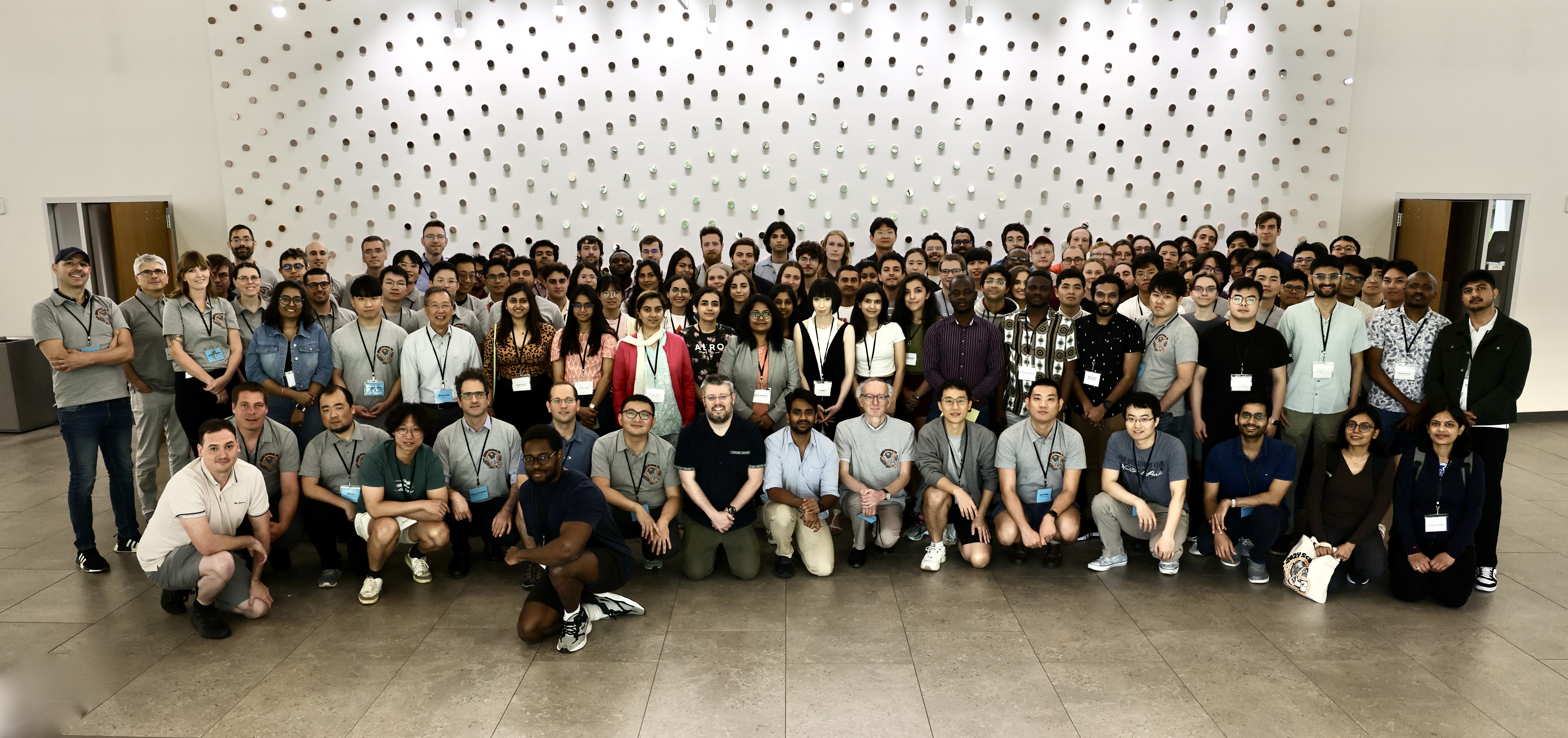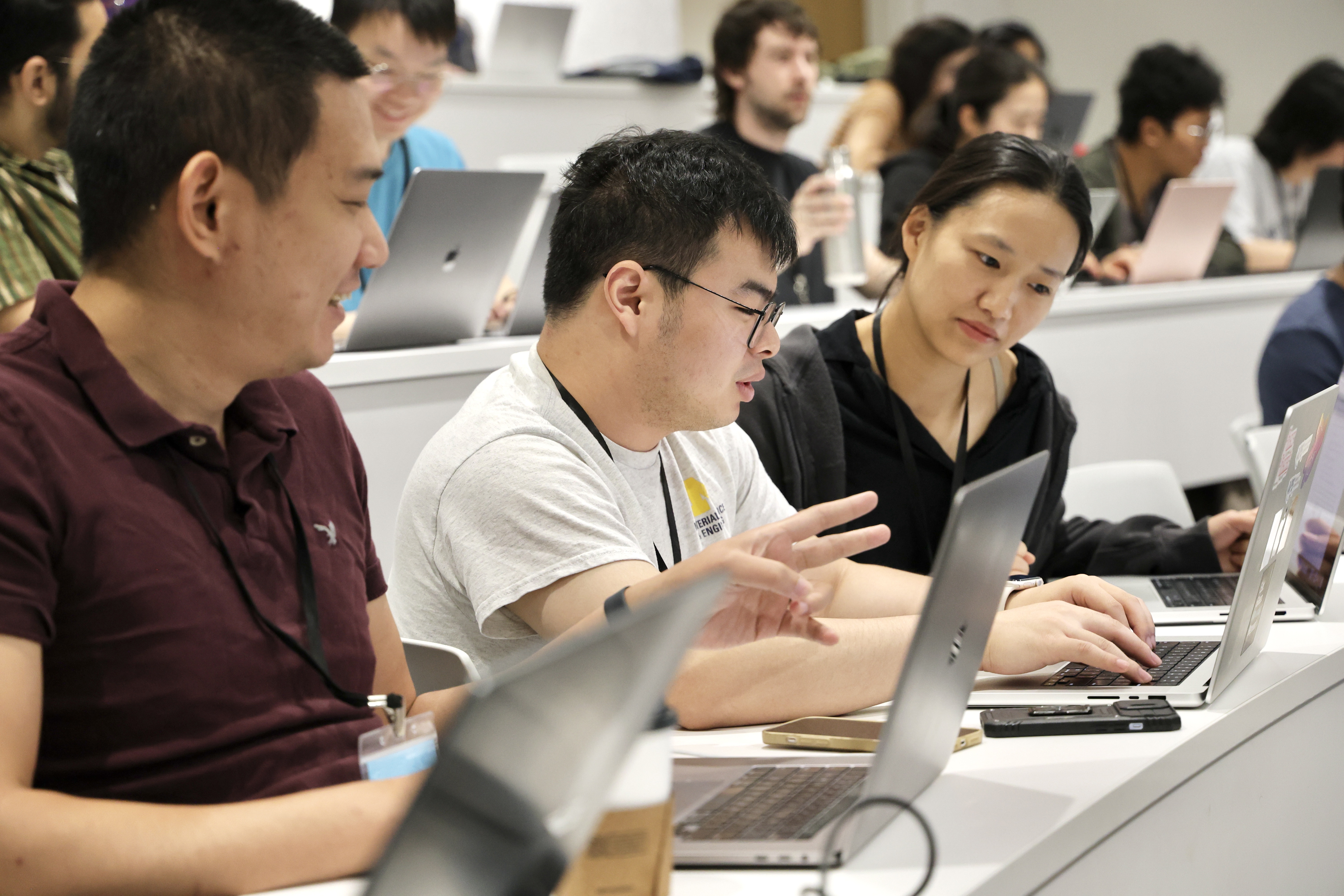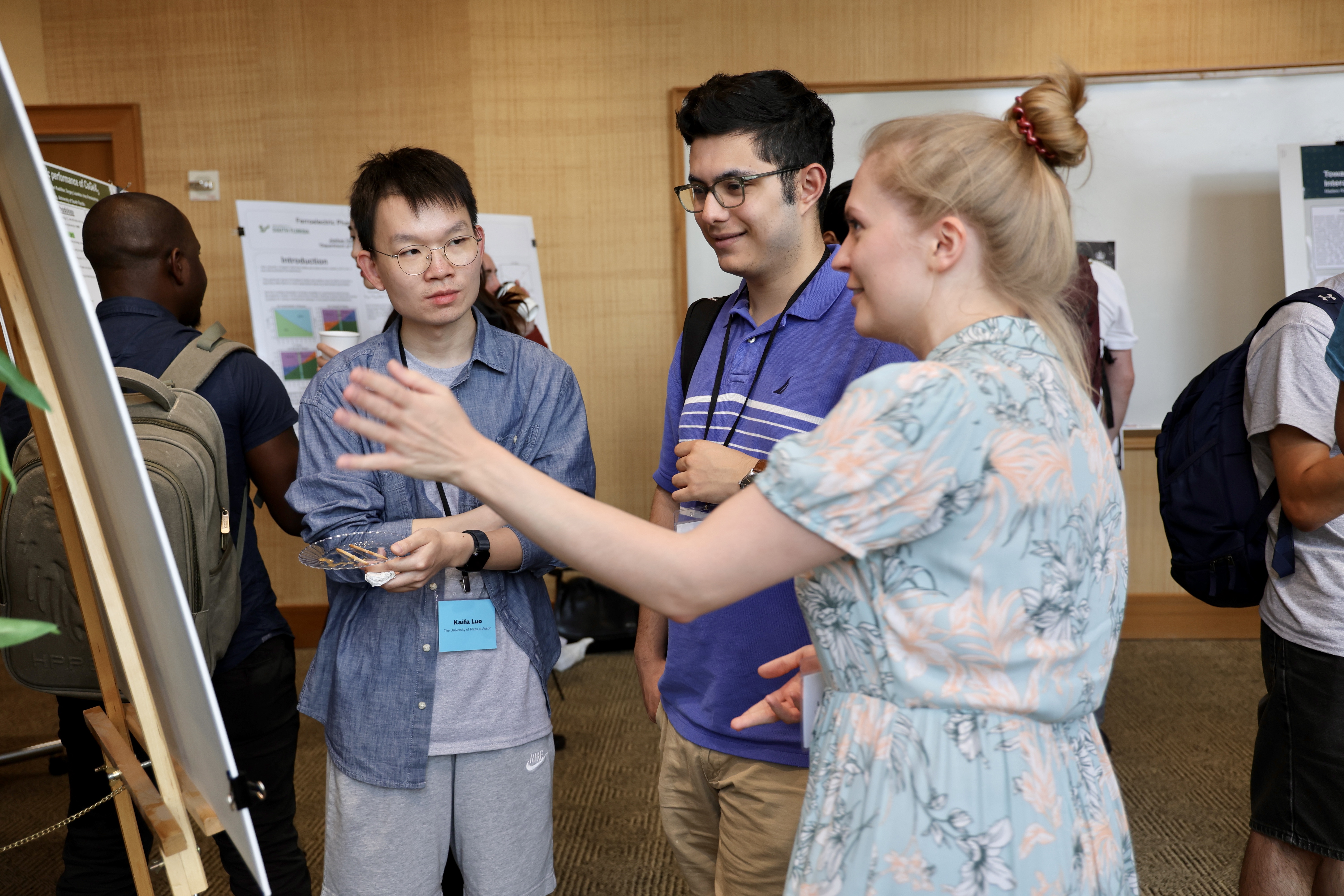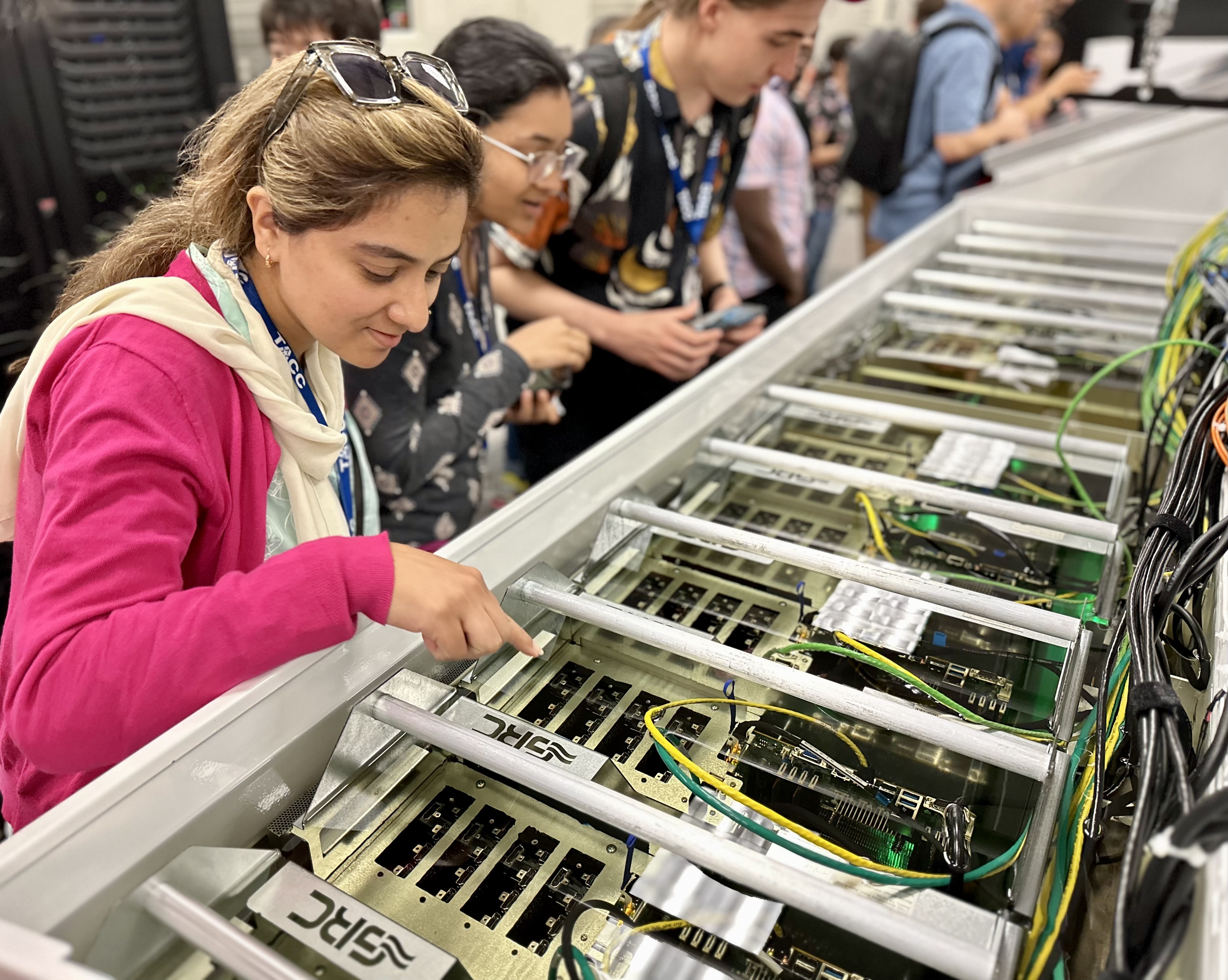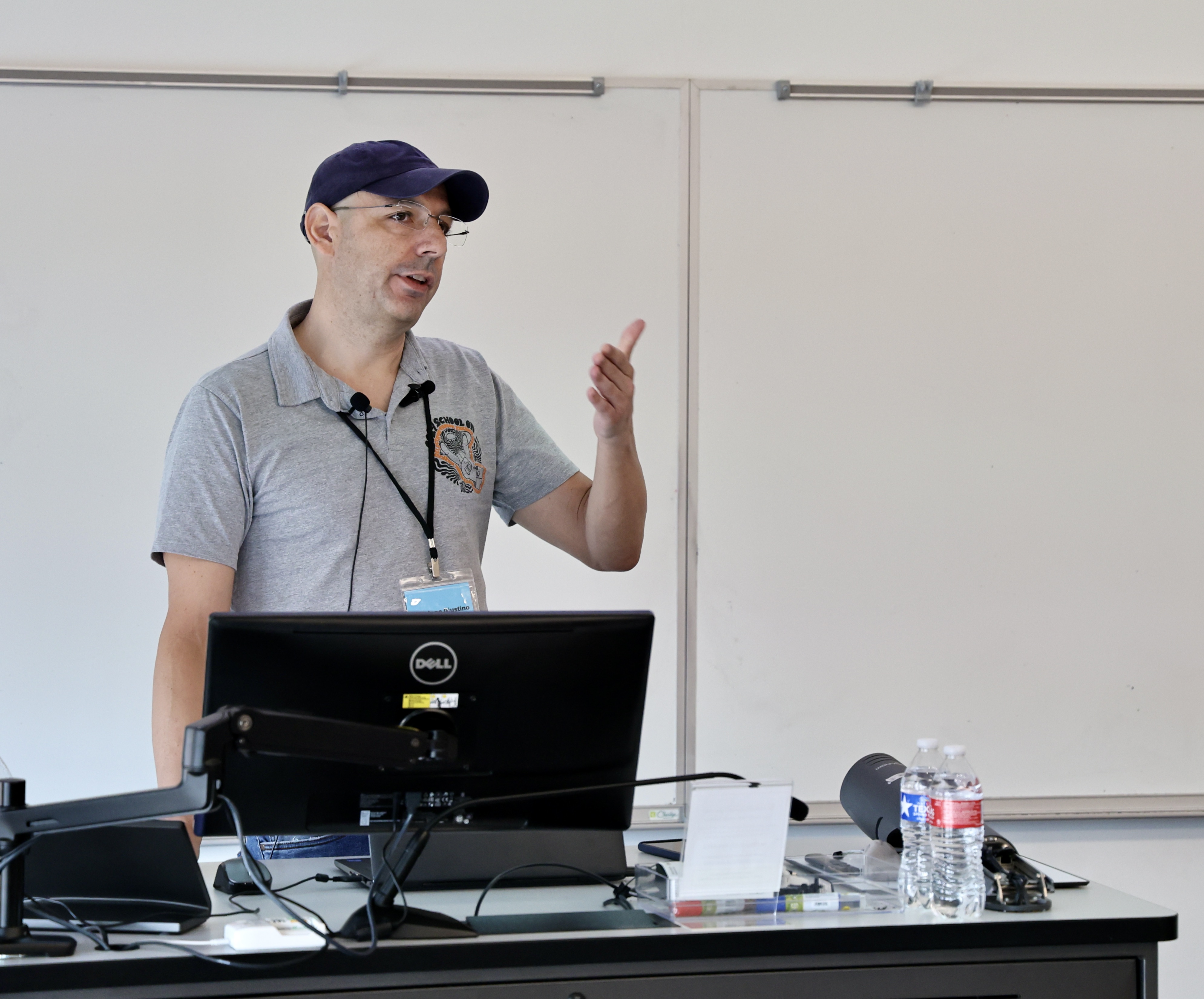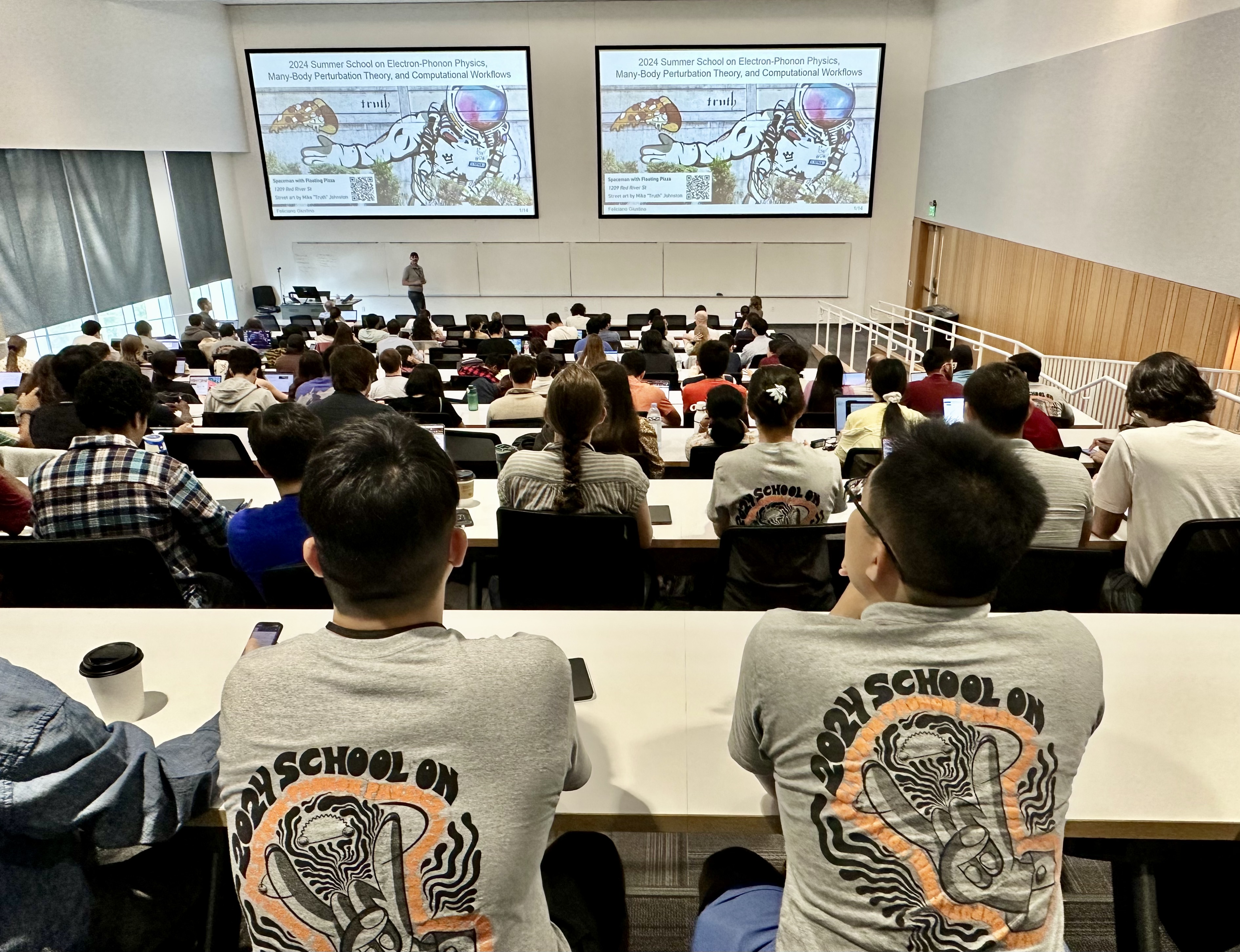The 2024 Summer School on Electron-Phonon Physics, Many-Body Perturbation Theory, and Computational Workflows, held at the University of Texas at Austin, showcased the intersection of computational material science and advanced theoretical techniques. Sponsored by the National Science Foundation (NSF), the Department of Energy (DOE), the Texas Advanced Computing Center (TACC), and the Oden Institute for Computational Engineering and Sciences, this week-long event gathered 130 graduate students, postdocs, and faculty to explore cutting-edge computational methodologies. More than 500 additional attendees participated online.
A key aim was to enhance software and coding literacy within the scientific community. Through lectures and hands-on tutorials from June 10 - 16, participants gained practical experience in using supercomputers to tackle research challenges. Feliciano Giustino, Director of the Oden Institute’s Center for Quantum Materials Engineering and lead organizer, emphasized the school’s objective: "The goal is to train graduate-level students in modern techniques for computational data science and the use of high-performance computing infrastructure."
